Are you torn between two popular garden plants, Gardenia and Azalea? It can be difficult to decide which one is the best choice for your garden. Both of these plants come with their own unique benefits and drawbacks that need to be considered. Our guide will provide all the information you need, so you can make the right decision for your outdoor space!
Differences Between Gardenia and Azalea
Gardenia and Azalea are two of the most popular shrubs for gardens. Both have beautiful flowers, but they do have some differences that you should be aware of before deciding which one to grow in your garden.

The main difference between Gardenia and Azalea is their size, scent, and blooming period. Gardenias typically grow larger and faster than azaleas, with a height ranging from 3-5 feet tall. They also have sweetly scented white blossoms that bloom from late spring to early summer. Azaleas, on the other hand, usually stay much smaller (2-3 feet) and tend to bloom earlier in the season with fragrant pink or red flowers.
Characteristics
Gardenia and azalea are both beautiful flowering shrubs that can be used to add color, texture, and interest to any garden. They have some similarities, but they also have a few key differences that you should consider when deciding which one is right for your garden.
Gardenia has glossy evergreen leaves that are usually dark green in color. Its flowers range in shades of white, pink, or yellow depending on the variety and bloom from spring through summer with a sweet scent. It needs full to partial sun and acidic soils with good drainage. Gardenias require extra care as they’re susceptible to pests such as mealybugs and aphids.
Azaleas come in many different shapes, sizes, and colors. They’re native to North America and have large clusters of showy flowers that bloom in the springtime. Azaleas prefer light shade and acidic soils with plenty of moisture but don’t require as much maintenance as gardenias. However, they can be prone to disease if not taken care of properly.
Description
Gardenias and azaleas are both flowering plants that can add beauty to your garden. Gardenias have a distinct, fragrant white flower with glossy evergreen leaves. Azaleas have clusters of colorful flowers in shades of pink, purple, red, white, and yellow.
Growing Habit
Gardenia and Azalea are both beautiful flowering bushes that can add a vibrant splash of color to your garden. Gardenias have glossy, dark-green foliage and fragrant white blooms while azaleas have attractive flowers in pink, purple, or white colors.

When it comes to growing habits, gardenias are considered shrubs since they tend to remain relatively low with an average height of 3-5 feet tall. On the other hand, azaleas are usually taller than gardenias – reaching up to 6 feet in height – but may take on a more spreading form rather than upright shape. In terms of soil type, both plants prefer moist but well-drained soils. They also require full sun or partial shade and can benefit from regular pruning.
Gardenias are generally more heat-tolerant than azaleas, which prefer cooler climates. However, both plants can thrive in warmer temperatures as long as they are provided with the right amount of water and fertilizer. Additionally, gardenias tend to be more drought-resistant than azaleas and may do better in dryer conditions.
Hardiness Zone
Gardenias and azaleas are both native to the southeastern United States, so they’re well-suited for warmer climates. But depending on your location, you may need to pick one or the other.
Flowers
Gardenias and azaleas both make beautiful flowers, but there are some differences. Gardenia flowers come in white or yellow and have a very fragrant scent. They tend to be more long-lasting than azalea flowers, which come in shades of pink, lavender, red or white. Azalea blooms can last up to 10 days if they are kept out of direct sunlight.
Leaves
The leaves of gardenias and azaleas also have a few similarities, but they differ in size. Gardenia leaves are lanceolate-shaped with a leathery texture. They usually grow to be 2–4 inches long and 3/4–1 1/2 inches wide. Azalea leaves are typically obovate or elliptic shaped with an evergreen-like texture. They can be anywhere from 0.5–3 inches long and up to 1 inch wide.
When it comes to color, gardenias usually have glossy dark green foliage while azaleas range from light greens to deep reds (depending on the variety). The amount of sunlight each plant receives also affects its leaf hue, so make sure to place them in a spot that gets adequate light.
Bloom Time
Gardenias and azaleas have different bloom times. Gardenias begin blooming in spring and last through summer until fall. Azaleas, on the other hand, are typically late spring and early summer bloomers.
In terms of hardiness zones, gardenia plants can tolerate temperatures as low as USDA Zone 7 while azaleas are hardy to USDA Zone 4. This means that gardenias may not be suitable for regions with particularly cold winters.
Both gardenia and azalea plants prefer partial shade to full sun exposure. However, while gardenias require more consistent moisture than azaleas do, they both will need supplemental water during periods of drought or heat to stay healthy.
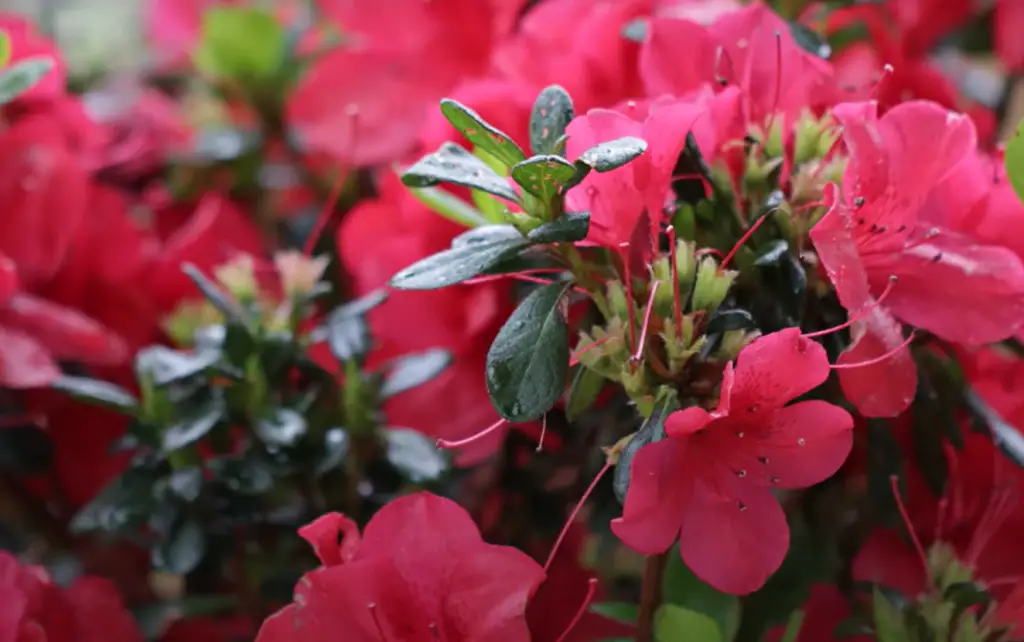
When considering bloom time, gardenias offer a longer blooming season than azaleas, making them ideal for those looking for spring through fall color in their garden. On the other hand, azaleas may be more suited to regions with particularly cold winters due to their higher hardiness zone tolerance. Both plants require partial shade and supplemental water during periods of drought or heat. Ultimately, it is up to you and your gardening needs when deciding which plant is better for your garden.
Fragrance
Gardenias are known for their incredibly fragrant flowers, while azaleas don’t offer the same intensity of scent that gardenia does. Gardenias will fill the air with a sweet, floral fragrance, while azaleas have a more subtle smell.
For those looking to add a heady scent to their garden, gardenias are a great choice. Azaleas might be better suited for gardens that prefer a certain visual atmosphere over an aromatic one.
Edibility and Toxicity
When it comes to edible flower petals, neither gardenias nor azaleas are edible. There have been reports of people eating the petals of both flowers with no ill effect, but this is not recommended due to possible toxic compounds that could be inside the petal. The leaves and stems of gardenia plants can cause skin irritation if handled too much or ingested.
Azalea sap can additionally cause an allergic reaction in some cases when coming into contact with skin, so always wear gloves when gardening with them! Both types of plants should be kept away from pets and children, as they may try to eat them and experience some unpleasant side effects.When it comes to toxicity, both gardenias and azaleas can be dangerous if consumed or handled improperly, so always take the necessary precautions when dealing with these plants in particular. If you are uncertain about any aspect of gardening with either type of plant, speaking to a professional is the best way to ensure safety.
The Best Time To Plant
The best time to plant your gardenia or azalea varies depending on the climate of your area. Generally, it’s best to plant them from late winter to early spring when temperatures are mild and there is plenty of moisture in the soil. You should also take into account the timing of any anticipated frost in order to ensure that your plants will be safe during colder months.
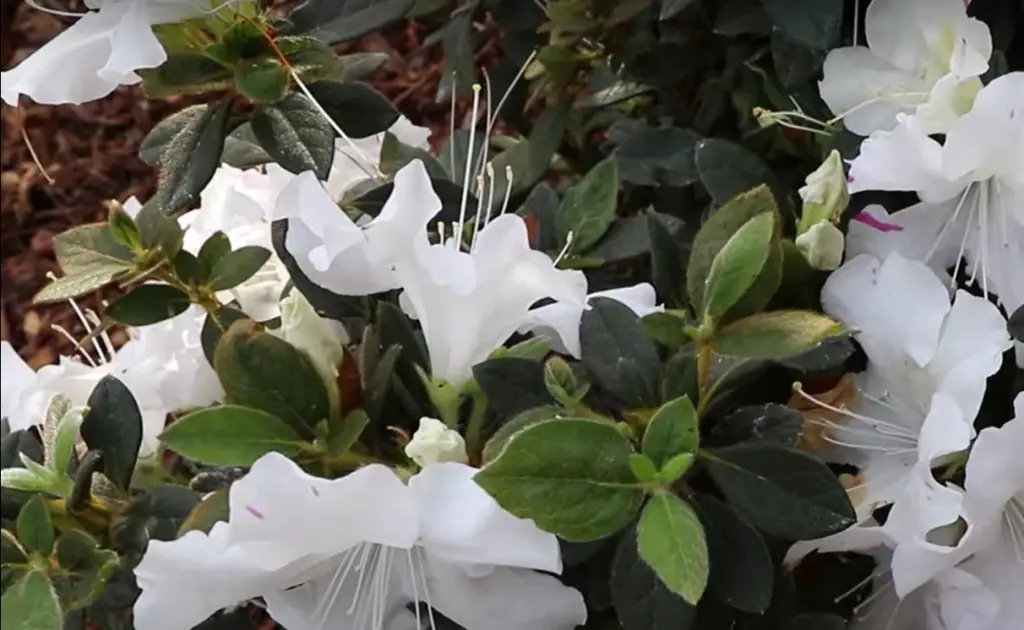
It doesn’t hurt to give your gardenias and azaleas some extra protection if you’re living in a region with cold winters. If you can find an area that is well-drained and sheltered from cold winds, this can help keep your plants healthy throughout the season. Mulching around these plants is also recommended, as it helps keep the soil temperature more consistent and retains moisture.
Gardenia vs. Azalea: Which is Better?
Do you love the look and smell of flowers in your garden, but aren’t sure which type is best for your space? Gardenias and azaleas are two of the most popular and attractive flowering plants available, so choosing between them can be a difficult decision.
Gardenias are known for their stunning white flowers with yellow centers and glossy, dark green foliage, while azaleas come in a variety of colors including pink, red, purple and white. The blooms of gardenias are much larger than those of azaleas, making them more eye-catching. However, one advantage that azaleas have over gardenias is that they tend to bloom longer throughout the year. [1]
FAQ
What are the cons of gardenia?
Gardenias have a few potential drawbacks. They are prone to fungal diseases, require plenty of water, and can be difficult to maintain in cooler climates. If not monitored and cared for correctly, gardenias can become weak and infested with pests or disease. Gardenia plants also produce an unpleasant smell when too much fertilizer is used. [2]
Where do gardenias do best?
Gardenias love the outdoors, and do best in full sun or partial shade. They thrive in well-drained soil and plenty of organic matter such as compost. Gardenias are also quite drought tolerant once they become established. In hot summer climates, gardenias may benefit from afternoon shade to protect them from intense heat and direct sunlight which can be too harsh for their delicate petals. [3]
Azaleas prefer a little more humidity than gardenias, so they grow best in partial shade with some protection from the hot summer sun. They should be planted in acidic soil that is rich in organic material and watered regularly throughout the growing season. Azaleas are also quite sensitive to drought, so be sure to water them adequately during dry spells.
Is Gardenia a good plant?
Yes, gardenia is a great plant that can make your garden look beautiful. It has lush green leaves and fragrant white flowers that add charm to any outdoor space. Gardenias are easy to care for and require minimal maintenance once established. They prefer well-draining soil with a slightly acidic pH balance, but will tolerate light shade or full sun if planted in the right location. The only downside of gardenias is that they are susceptible to disease and pests, so it’s important to keep an eye out for signs of trouble. If cared for properly, however, these plants can provide years of beauty in your garden!
Which is better: azalea or rhododendron?
This is a difficult question to answer because both of these plants have their own unique advantages. Azaleas are a popular choice for gardeners because of their showy blooms and lush foliage. They come in many varieties, so you can choose one that suits your garden’s style. Plus, they don’t require much maintenance beyond watering and occasional pruning. Rhododendrons, on the other hand, are prized for their large evergreen leaves and vibrant colors. The flowers are also quite striking when in bloom. On the downside, rhododendrons need more attention than azaleas as far as soil pH and fertilizing go. Ultimately, it comes down to personal preference and what will look best in your garden. With the right care, both plants can be a beautiful addition to any landscape. [4]
Useful Video: Azalea cv. Hardy Gardenia
Conclusion
When it comes to deciding which flowering plant is best for your garden, the choice between a Gardenia and an Azalea ultimately boils down to personal preference. Both plants have their own unique benefits and drawbacks, so consider carefully what you want out of your garden before making a decision. Your climate and soil conditions also play a role in determining which species will be more successful in your garden, so do some research in advance as well. Ultimately, both plants can provide beautiful blooms that are sure to please any nature lover! No matter which one you choose, with proper care and attention they can bring years of enjoyment to your outdoor space. Good luck!
References:
- https://www.gardenfine.com/gardenia-vs-azalea/
- https://www.webmd.com/vitamins/ai/ingredientmono-1488/gardenia
- https://www.gardenia.net/guide/learn-how-to-grow-and-care-for-your-gardenia
- https://www.allaboutgardening.com/azaleas-vs-rhododendrons/





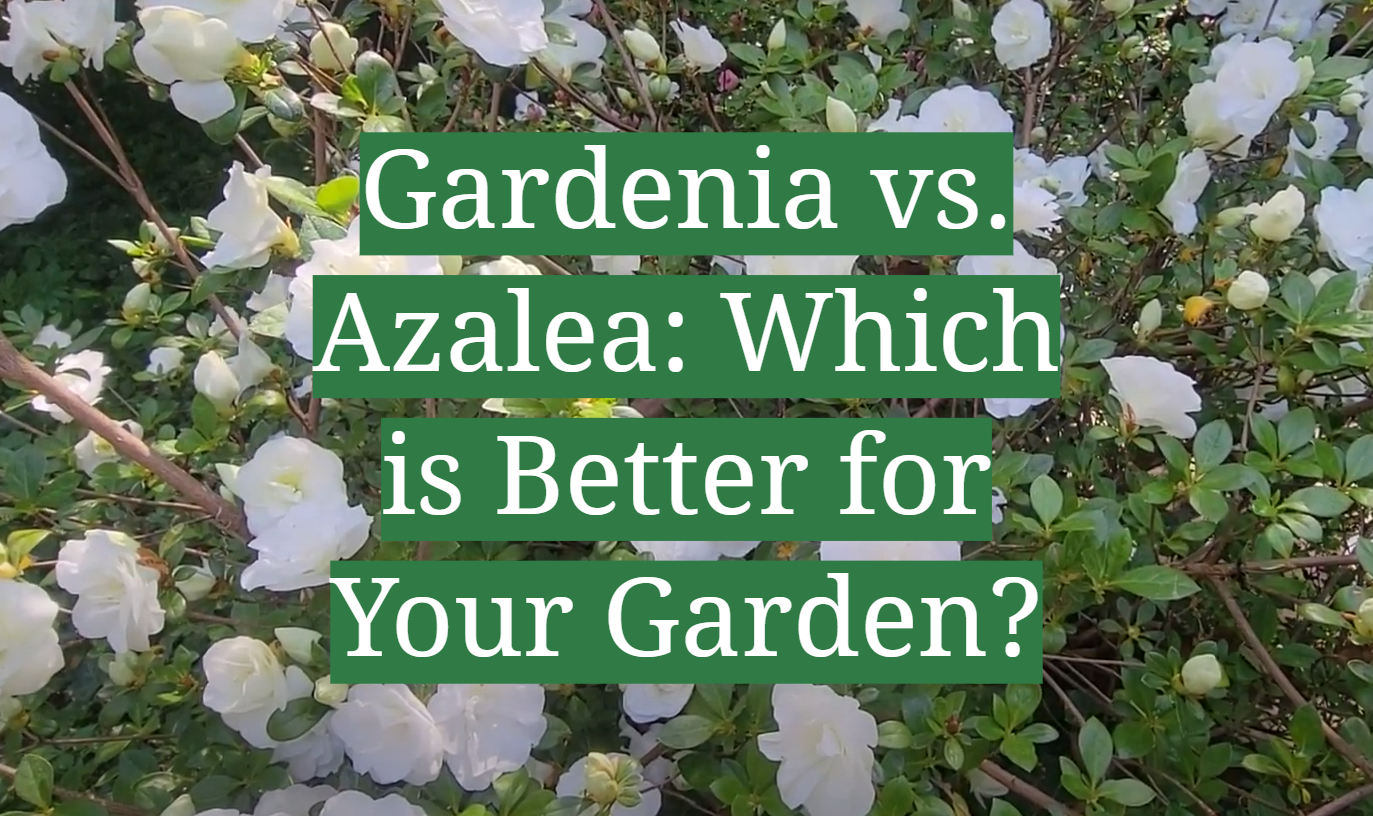

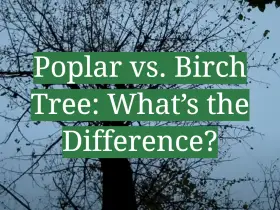

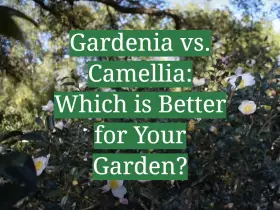
Leave a Reply
View Comments